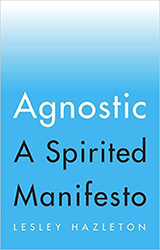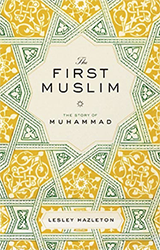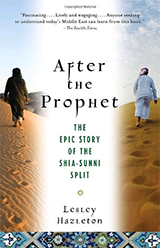“Some people get queasy,” I’d been warned. Hah, not me! I put on the headset, hopped on the stationary bike, and was delighted to find myself back on a racetrack (even if only on two wheels instead of four): a good road track, winding up and down and around sharp corners, with high desert mountains to either side. The harder I pedaled, the faster I went. And to steer, all I had to do was lean this way or that, much like in a kayak.
 I went fast — whoopin’ and hollerin’, freed of all responsibility by the knowledge that none of this was real. And yet I couldn’t help acting as though it was. So much so that when I realized I was about to crash into a mountainside, I braked as hard as I could, and tried to dismount.
I went fast — whoopin’ and hollerin’, freed of all responsibility by the knowledge that none of this was real. And yet I couldn’t help acting as though it was. So much so that when I realized I was about to crash into a mountainside, I braked as hard as I could, and tried to dismount.
I guess I stepped off a bit too soon, because as soon as my foot touched the ground, I suddenly, deliriously, had zero sense of balance. I was halfway to the ground when I found out that there’s much to be said for being caught in real arms when your brain’s been deceived into unreality.
It was my friend Susie Lee’s fault (that’s her here on the bike, about to get queasy). A leading art-and-tech maven, she’d whisked me off to SIFFx, the new VR offshoot of the Seattle International Film Festival. We’d wandered in to Vulcan Technology’s ad hoc lab, where they were working on test displays in situ — a playful defiance of perfectibility that I hadn’t expected, and found quite admirable.
 “This is creepy,” I said as I generously offered myself up as a test subject for their “hover-chair” (move your body around in it, and you find yourself moving around a dilapidated old house). “Looks like it could use a couple of chainsaws on the wall.”
“This is creepy,” I said as I generously offered myself up as a test subject for their “hover-chair” (move your body around in it, and you find yourself moving around a dilapidated old house). “Looks like it could use a couple of chainsaws on the wall.”
“Great idea,” said the guy at the keyboard, and started working on importing a chainsaw or two. (And of course, at right, I’m telling him exactly where to put them.)
Alas, the informal Vulcan lab was one of the few places where I could do more than simply look. Too much else was dismayingly passive, and the “content” too often made me feel like I was being lowest-common-denominatored, Hollywood-style. I mean, why in the name of all that’s environmentally holy would anyone in Seattle want to create an animated cartoon rain forest when magnificent real rain forests are just a couple of hours’ drive away?
But back to that passivity. Just how passive? At another location, I watched others don headsets and earphones to view short movies I’d watched earlier, including that “rain-forest” one. These were movies whose rewards, meager as they were, came from moving your head — looking high up and around and way behind you. But nearly everyone stood stock still, like they were frozen.
“Plato’s cave,” I thought. “The VR origin story.”
Remember, in The Republic, when prisoners chained to the wall of a cave see shadows cast by a fire and mistake the shadows for reality? Like those prisoners, most of my fellow head-setters seemed unable to move, passively accepting shadow life. Faced with blatantly fake virtual environments, they swallowed them whole.
Could it be, I wonder, that two and a half thousand years after Plato, technology is merely trying to emulate him? And with zero sense of irony?
I can see lots of great medical and educational uses for VR. I can see lots of not-so-great uses too, including military ones. But above all, I can see huge profits for the Entertainment Industry. Forget being a couch potato — make that a cave potato.
But still, there’s that Wow factor. And in that, mea culpa. I’d love to go paragliding, for instance, and ski-jumping: two things I know I’ll never have the guts to do IRL, and would eagerly do in unreal life. And then…
If you’re philosophically minded, you might remember the famous paper “What Is It Like To Be A Bat?” by Thomas Nagel, a leading philosopher of consciousness. Impossible to know, he said. We may know a lot about bats — how they fly, their wing structure, and so on — but we’ll never know what it’s like to actually be one. Or could VR change that? Not with pretty 3D pictures of bats, but by getting as close as a human can get to what it feels like to fly like one (or more accurately, what it feels like to be a human thinking she’s flying like a bat).
That intrigues me, far more than crashing bikes into mountains or hanging chainsaws on walls. Could we use VR to actually enter someone else’ experience? Or something else’s? To feel what they feel? Could we use it to expand our minds? To do something more than watch shadows?
Or will we just settle for wowing out?









 I slow down for falcons.
I slow down for falcons.











